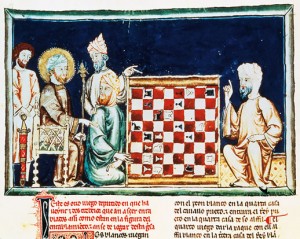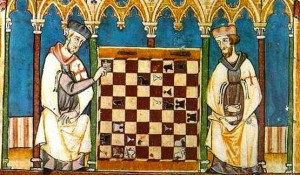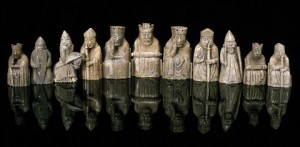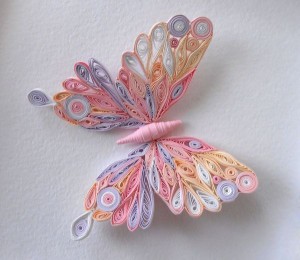Film noir is an interesting genre and rather difficult to define. Without a concrete definition there are only lists of elements that can be attributed to noir films, and even then it quickly becomes evident that the genre elides categorization.
There is one particular element that I want to look at, the femme fatale. Actually, two, the femme in conjunction with the theme of alienation. In fact, if I was writing a post attempting to define the genre as best I could, the idea of alienation would conceivable serve as a connecting theme. I have yet to see noir without an overbearing sense of the “otherness” intrinsic in western culture – highlighted and exposed.
Alienation in noir typically unfolds for the protagonist and for the femme, and is often a common thread that brings them together; the protagonist must find escape from both of these in order to regain access to mainstream society. The leading male role will spend a large portion of the film discovering his alternatives: either find a means to reintegrate into society, or die (literally, or figuratively by slinking even further into the undesirable underground of the film).
The femme in this case is instrumental in the male’s development. He will either realize there is still something worth living for, and use the femme as a stepping stone to ascent into a proper role, after which she is discarded, or he becomes disgusted with himself and consequently her, unmasking her vile inner self, for which she must die. Either way, before the film ends, the femme must be punished for her existence. After all, the audience wants catharsis and her demise seems to provide just that. But why?
The first, most immediate, and not inaccurate response is that she dies due to her conduct. She is malicious, selfish, a thief, a liar, a manipulator, often times a murderer herself, and the list of her faults continues. She is the epitomized bad guy (or in her case, woman), living up to her namesake. So why shouldn’t the audience want to witness her demise?
Something just bothered me about this. It all added up, as in yes, in her current form the femme is deplorable, but it was still off. After tinkering for a bit I realized my next question: why was she created this way? The femme fatale’s lifestyle can be stripped of many of these vices and still maintain its integrity within the noir genre. In other words, the femme can still be bad (but in a forgivable way) without being evil. So why does her character have to transcend into absolute villainy?
The answer is not in her most wicked state, but rather dependent upon her other qualities. She embodies traits that men and women are afraid of. She is self serving, unafraid of pursuing her desires, unperturbed by societal norms and the fact that she adheres to none of them, and she seems to have no problem with selfish self gratification. Further she is attractive, intelligent, cunning, witty, and most importantly, autonomous. While these are extremely appealing traits, they are simultaneously terrifying. Men want her, and women want to be her. The majority of men cannot have her, and most women will secretly envy every aspect of her, wish they could embody even a fraction of her traits, but are too afraid to cross the line to ever even admit it. And so to kill her off on film deals a certain satisfaction to the viewer.
What all of the above can be summed up in, is alienation. She lives outside of prescribed norms, and even when outwardly functioning in society she subverts the rules to suit her own purposes. Most importantly, and dangerously, she draws others in. The male protagonist who will invariably be drawn to her is in danger of losing his constructed self. Just like the viewer, the protagonist has spent a lifetime building himself into a role which the femme can potentially corrupt and tear down. She is alienated as is he, but in the beginning he is only marginally so. As the plot progresses he degenerates with her. If he does not leave of his own volition and use his encounter with her as an experience to better himself, he either destroys her, is destroyed with her, or simply kills himself.
However, the above traits are not enough to justify killing her off, especially because so few will admit to any of the aforementioned feelings (going as far as to vehemently deny as much as giving her a second thought). The audience wants to see her suffer or die, but must also feel justified in wanting this. Directors like Huston, Wilder, and Truffaut (no name only a few) understood the delicate psychology involved, and when creating the character she doubly satisfies the viewer’s desire to see and briefly interact (even if only superficially through a screen) with such a creature, but then also watch her get destroyed. To validate this end result countless serious transgressions are heaped upon her – she becomes the femme fatale/criminal mastermind/murderess antagonist.
She is dehumanized through her abhorrent actions and her already existent alienation so that she may absorb all the qualities the viewer wants to eradicate from within themselves. The catharsis offered through her death is a purging of undesirable notions and wants that threaten the viewer’s society.
Her wickedness is no longer in the realm of ambiguity where her sins can be argued. She does’t just bend the rules, she demolishes them, and so the viewer can watch her die/disappear/suffer guilt free. That is why she was created this way.






